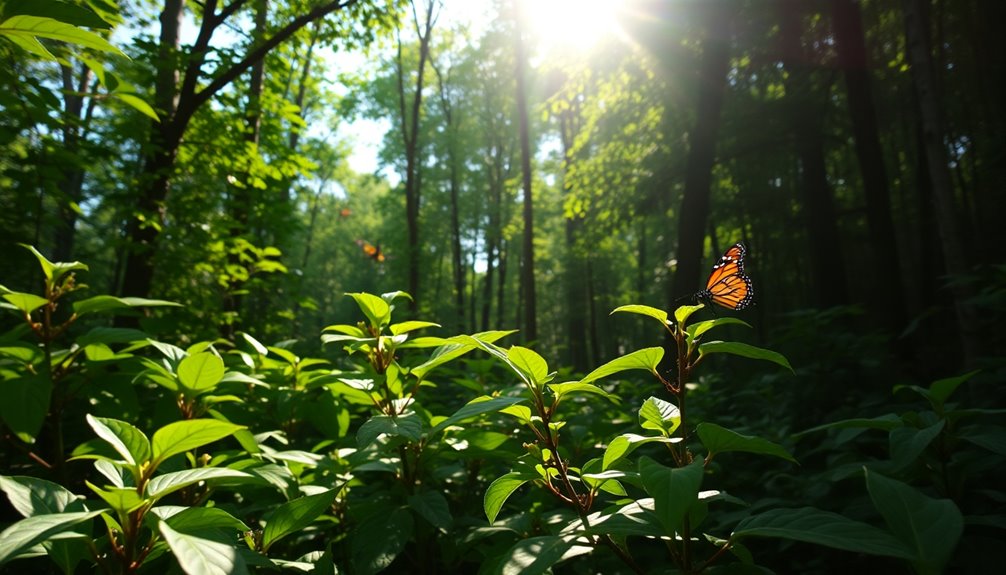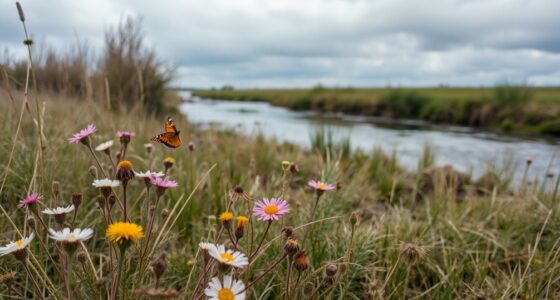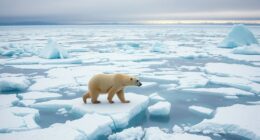Invasive species threaten biodiversity by disrupting ecosystems and outcompeting native species for essential resources. They can introduce diseases that native populations often can't resist, leading to declines in local wildlife. Species like Japanese knotweed and Burmese pythons not only monopolize space but also reduce the populations of native flora and fauna. As you explore this topic further, you'll uncover more about their impact and the strategies to combat their spread.
Key Takeaways
- Invasive species outcompete native species for resources, leading to population declines and reduced biodiversity in ecosystems.
- They introduce diseases to which native species lack immunity, further threatening local wildlife populations.
- Invasive species create monocultures that disrupt food webs and habitats, negatively impacting native flora and fauna.
- Human activities, like global trade and travel, facilitate the spread of invasive species, exacerbating biodiversity loss.
- Climate change allows invasive species to expand into new areas, increasing competition for vulnerable native species and compromising ecosystem resilience.
Understanding Invasive Species
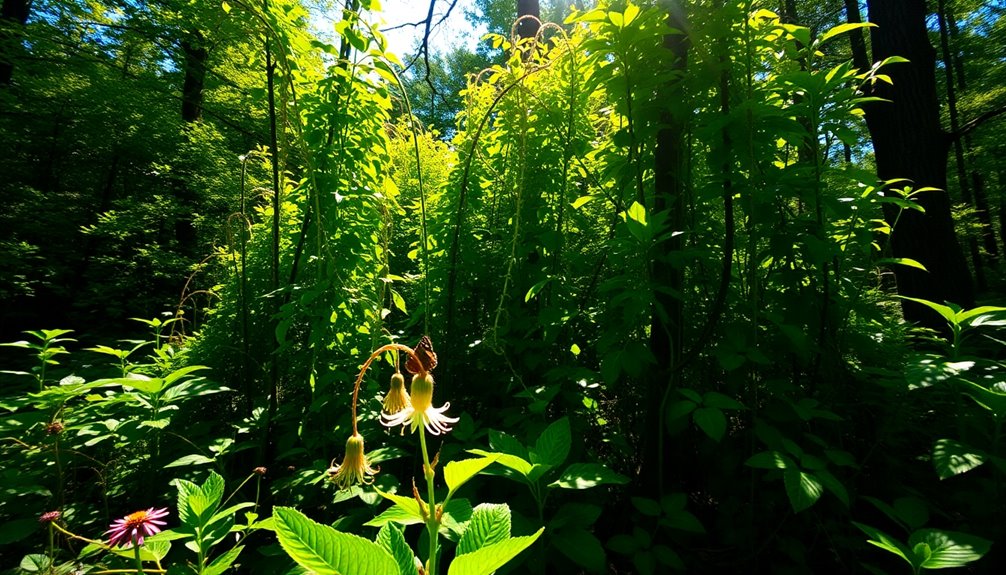
When you think about ecosystems, it's important to understand how invasive species can disrupt their balance. These non-native organisms often outcompete native species for essential resources like food, water, and habitat.
The impacts of invasive species are significant; they account for 40% of endangered species listings, directly threatening global biodiversity. By introducing diseases to which native species lack immunity, invasive species further jeopardize local populations and alter ecosystem dynamics.
For instance, the aggressive spread of Japanese knotweed can monopolize space, leading to reduced biodiversity. Additionally, invasive species can contribute to the extinction of native species, as seen with Dutch elm disease devastating native elm populations.
Understanding these threats is crucial for preserving ecosystems and their inherent biodiversity.
Mechanisms of Spread
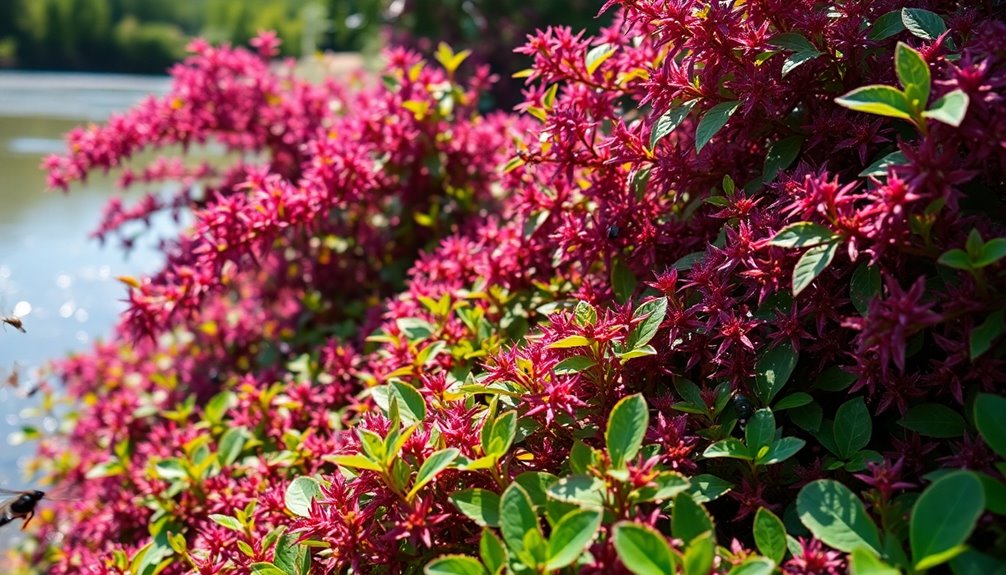
You might be surprised to learn how human activities play an essential role in spreading invasive species.
From shipping practices to accidental introductions, these actions create pathways for non-native organisms to thrive in new environments.
Climate change further complicates things, as it allows these invaders to expand into areas that were once inhospitable.
Human Activities Facilitate Spread
Human activities play an essential role in the spread of invasive species, often without our awareness. Through global trade and travel, invasive species hitch rides across regions. Ships transport aquatic organisms in ballast water, while small boats carry them on propellers.
Even wood and shipping pallets can harbor insects, leading to new infestations. Ornamental plants, initially introduced for landscaping, may escape cultivation and disrupt local ecosystems. These human actions facilitate the spread of invasive species, posing threats to biodiversity.
Additionally, climate change creates conditions that favor these invaders, allowing them to establish dominance over native species. It's vital to recognize how our choices impact the environment and take steps to mitigate these effects.
Climate Change Expansion Effects
As global temperatures rise and weather patterns shift, invasive species find new opportunities to thrive in areas where they once struggled. Climate change creates favorable habitats, stressing native species and making them more vulnerable to competition. Invasive species exploit these ecosystem shifts more quickly than native species can adapt, leading to significant biodiversity loss. Extreme weather events further accelerate the spread of invasive species, allowing them to move across landscapes effortlessly.
| Mechanisms of Spread | Impacts on Biodiversity |
|---|---|
| Climate-related habitat changes | Decreased native species resilience |
| Increased temperatures | Vacant niches filled by invasives |
| Altered precipitation patterns | Reduced ecosystem stability |
| Extreme weather events | Accelerated species movement |
Understanding these dynamics is essential for addressing the threats posed by invasive species.
Impact on Native Wildlife
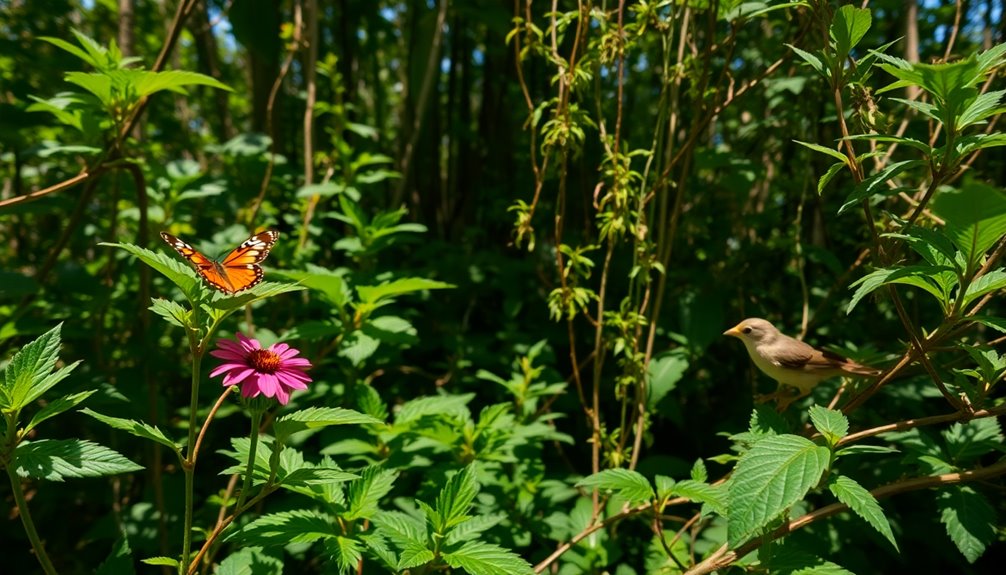
While ecosystems thrive on diversity, the introduction of invasive species disrupts this balance, directly impacting native wildlife. Invasive species often outcompete native species for critical resources, leading to declines in populations. For example, invasive carp overshadow salmon and alewives by consuming their food sources.
Additionally, invasive plants like garlic mustard create monocultures that displace diverse native flora, disrupting food webs and habitats. Direct predation also poses a threat; Burmese pythons in the Everglades prey on native mammals and birds, drastically reducing their numbers.
The rapid reproduction of invasive species, such as quagga mussels, exacerbates competition for resources. To protect native wildlife, the removal of invasive species is essential for restoring ecological balance and preserving biodiversity.
Examples of Invasive Species

Invasive species come in various forms, each presenting unique challenges to ecosystems and native wildlife. Here are some prominent examples:
| Invasive Species | Environmental Impacts | Effects on Biodiversity |
|---|---|---|
| Silver & Bighead Carp | Outcompete native fish for resources | Declines in native fish populations |
| Brown Marmorated Stink Bug | Causes significant agricultural damage | Affects local ecosystem diversity |
| Zebra & Quagga Mussels | Alter food webs and outcompete natives | Dramatic decline in native mussels |
| Garlic Mustard | Creates monocultures | Reduces biodiversity of flora |
These invasive species threaten local ecosystems, leading to declines in native species and disrupting biodiversity. Understanding their environmental impacts helps in addressing these challenges effectively.
Ecosystem Disruption
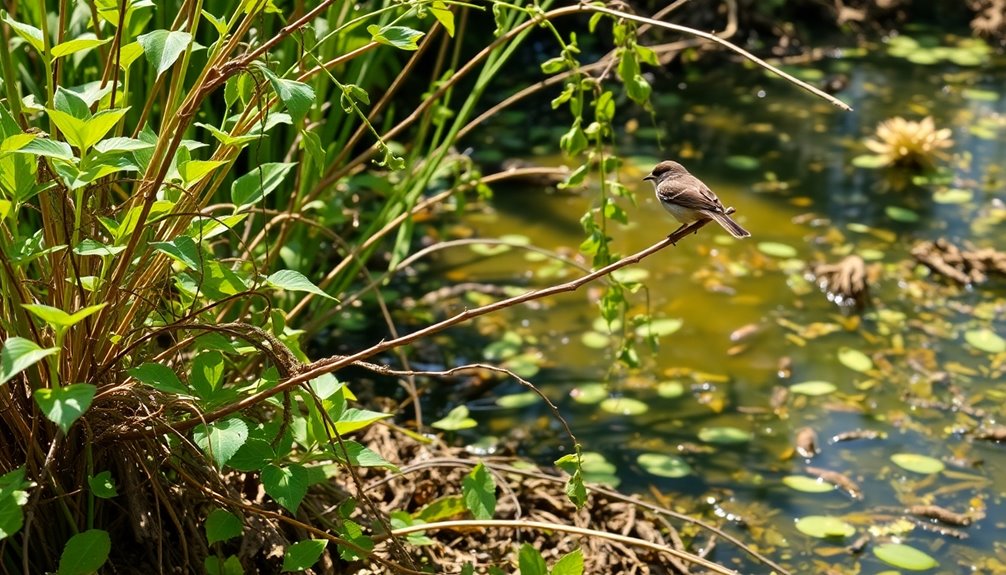
Invasive species can drastically change the balance of native ecosystems by competing for resources and altering habitats.
You might notice how species like lionfish and zebra mussels push out native fish and disrupt underwater landscapes.
This competition not only threatens native populations but also reshapes the entire community structure, leaving lasting impacts on biodiversity.
Native Species Competition
When invasive species enter an ecosystem, they often disrupt the delicate balance that native species rely on for survival.
These invaders aggressively compete for essential resources, resulting in a decline of native populations and threatening biodiversity.
Here are four ways invasive species affect native species competition:
- Resource Overconsumption: Invasive species consume food and water faster than natives can.
- Reproductive Overload: Species like invasive carp can spawn hundreds of thousands of eggs, overwhelming native fish.
- Habitat Domination: Invasive plants, such as kudzu, create dense growths that suppress native flora.
- Predation: The introduction of lionfish reduces native fish populations by consuming them and outcompeting them for food.
These dynamics threaten the ecosystem's health and stability, increasing the risk of extinction for native species.
Habitat Alteration Effects
As ecosystems evolve, the introduction of non-native species can drastically change habitat structures and functions, leading to significant disruptions.
Invasive species like zebra and quagga mussels outcompete native species for resources, harming local biodiversity and disrupting food webs.
Similarly, invasive plants, such as garlic mustard, create monocultures that suppress native flora, reducing habitat availability for wildlife and compromising ecosystem health.
In the Caribbean, lionfish threaten coral reefs by preying on essential native fish, further risking coral health and biodiversity.
Additionally, invasive species can alter soil chemistry and hydrology, disadvantaging native species and disrupting ecological balance.
Climate change often accelerates this spread, increasing pressure on at-risk native species and contributing to biodiversity loss.
Climate Change and Invasive Species
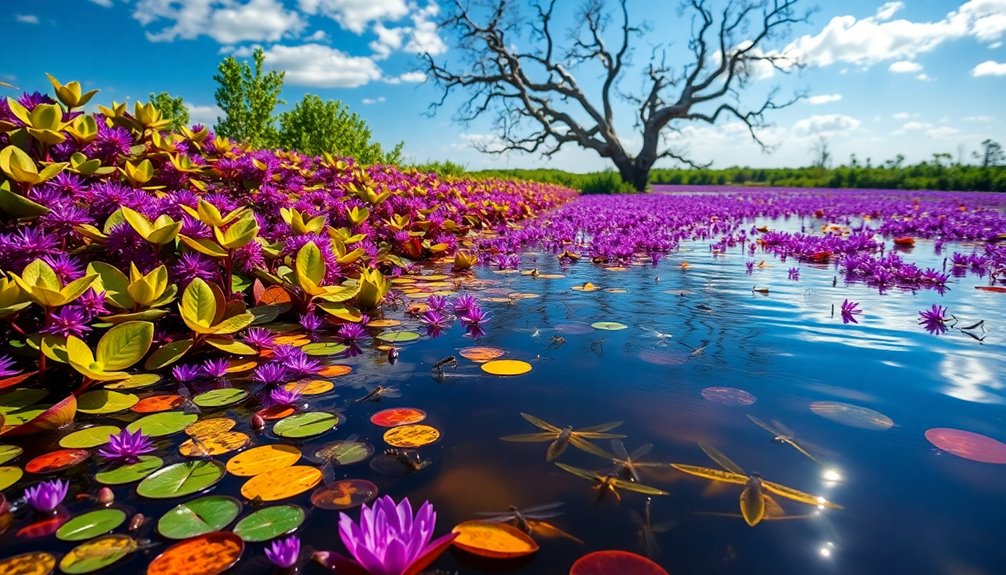
Climate change considerably influences the dynamics between ecosystems and invasive species, creating a challenging landscape for biodiversity.
As temperatures rise and precipitation patterns shift, invasive species find new opportunities to thrive.
Here's how this interplay unfolds:
- Altered environmental conditions favor invasive species over native species.
- Expanding habitats put additional pressure on already vulnerable native species.
- Invasive species outcompete natives for essential resources, further diminishing biodiversity.
- Weakened native populations become more susceptible to invasions, creating a feedback loop.
The effects of climate change on ecosystems amplify the threat posed by invasive species, making it critical to understand and address these challenges.
Protecting biodiversity in changing environments requires a proactive approach to manage invasive species effectively.
Prevention and Management Strategies

Effective prevention and management strategies are essential to combat the growing threat of invasive species. You can play an important role by learning to identify invasive species in your area and promptly reporting any sightings to authorities for early detection. This quick action helps limit their spread and mitigates potential damage.
Public education and community engagement are critical for raising awareness about the risks associated with non-native organisms, ensuring effective prevention. Additionally, consider biological management strategies that utilize natural predators or pathogens, which can control invasive populations with minimal harm to native species.
Finally, restoring native habitats not only enhances ecosystem resilience but also supports the recovery of native species, making it a key component in managing invasive species impacts.
Community Involvement
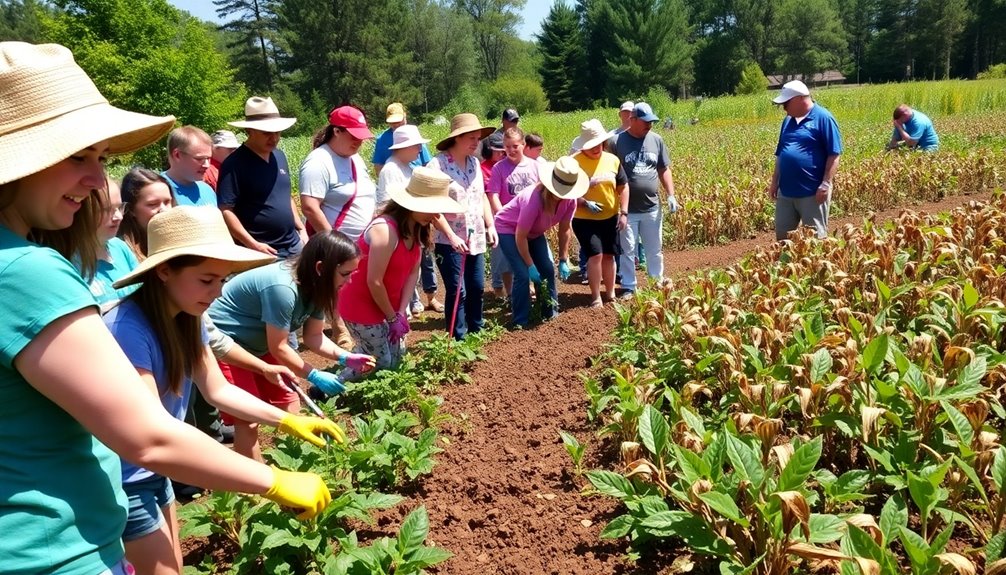
Community involvement plays an essential role in the fight against invasive species. When you get involved, you help protect native plants and restore habitats.
Here are a few ways you can contribute:
- Participate in educational programs to learn about the impacts of invasive species.
- Join local events focused on habitat restoration and the removal of invasive plants.
- Engage in citizen science programs to collect data on invasive species, aiding broader research.
- Advocate for policies like the Recovering America's Wildlife Act to unite community efforts.
Future Directions in Invasive Species Management
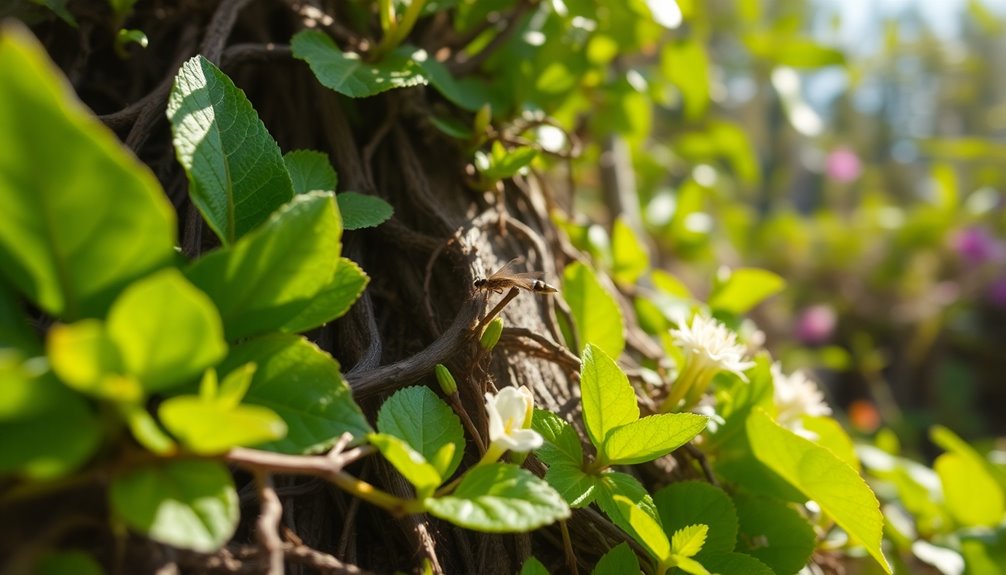
As we look toward the future of invasive species management, it's clear that innovative approaches are fundamental for tackling this growing challenge.
You'll find that genetic control methods, like gene editing and drives, hold promise for reducing invasive populations effectively.
Advances in monitoring through data collection and remote sensing technologies will allow you to track the spread of these species in real-time.
It's essential to promote global cooperation, especially as climate change shifts species distribution.
Adaptive management strategies that account for these changes are significant.
Finally, increasing public engagement through citizen science initiatives and educational programs can empower communities to participate actively in invasive species management, ensuring a collaborative effort to protect biodiversity.
Frequently Asked Questions
How Do Invasive Species Affect Biodiversity?
Invasive species threaten biodiversity by disrupting ecosystems and outcompeting native species.
When you introduce a non-native species, it often lacks natural predators, allowing it to multiply unchecked. This can lead to the decline or extinction of native species, as resources become scarce.
You might notice changes in habitat structure and food webs, making it harder for native wildlife to thrive.
Ultimately, these shifts can result in a loss of overall ecosystem health and diversity.
How Does Invasion Affect Biodiversity?
When it comes to biodiversity, invasive species can really throw a wrench in the works. They outcompete native species for resources, leading to declines in populations and even extinctions.
You'll notice habitats shift as these invaders change the landscape, often creating monocultures that stifle diversity. Climate change only adds fuel to the fire, making it easier for invasives to thrive and pushing vulnerable native species further to the brink.
How Might an Introduced Species Threaten Biodiversity?
An introduced species might threaten biodiversity by outcompeting native species for essential resources like food and habitat.
Since these invaders often lack natural predators, they can multiply rapidly, disrupting local ecosystems.
You'll notice changes in food webs and habitat as these species establish themselves, leading to declines in native populations.
This imbalance not only affects wildlife but also the overall health of the ecosystem, making it imperative to manage these threats effectively.
What Are the Five Major Threats to Biodiversity Are Habitat Destruction Invasive Species?
When considering the five major threats to biodiversity, habitat destruction and invasive species stand out.
Habitat destruction alters or eliminates the spaces where native species thrive, pushing them towards extinction.
Meanwhile, invasive species invade these environments, outcompeting native organisms for resources. They often reproduce rapidly without natural predators, leading to further decline in native populations.
Together, these threats create a challenging landscape for biodiversity, necessitating immediate attention and action.
Conclusion
Invasive species pose a serious threat to biodiversity, but you might think their impact is overstated. However, the evidence shows that they can outcompete native species, disrupt ecosystems, and lead to significant ecological imbalances. By understanding these threats and taking proactive measures, we can preserve our natural habitats. Community involvement and effective management strategies are key to combating this issue. Together, we can protect biodiversity and guarantee a healthier environment for future generations.
